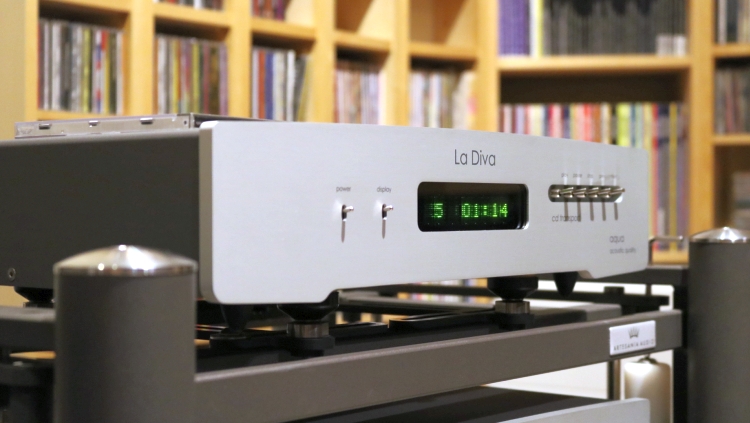
Review sample supplied by Hexagon Audio
Retail price in the NL (incl. 21% VAT): 8.700 euro
For the longest time, I have resisted all the streaming possibilities because I had not encountered a single music server that could beat my then-favorite Wadia 861 CD player in terms of timbre, soundstaging, and pure involvement. After having tried various music servers and all sorts of DACs, years later, the Antipodes DX server turned out to have a similar timbral presentation to the classic Wadia sound and this worked especially synergistically with the Apogee Diva magnetostatic speakers. The DX was not quite as fluid nor quite as 3D as the CD player, but it was certainly robust, sonorous, and impactful and that is what I required at that time. What ensued was a gradual move away from CD players until I became fully invested in music servers. For a solid period, the Antipodes CX marked the pinnacle of the period running Roon via a direct Ethernet connection to the CH Precision C1 DAC. This served me well until the Antipodes K50 emerged, which marked a new benchmark in terms of organic sweetness and liquidity.
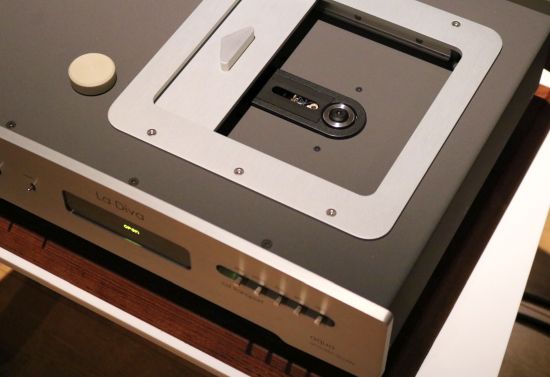
Above and below: the original La Diva with the familiar CD-Pro 2 mechanism
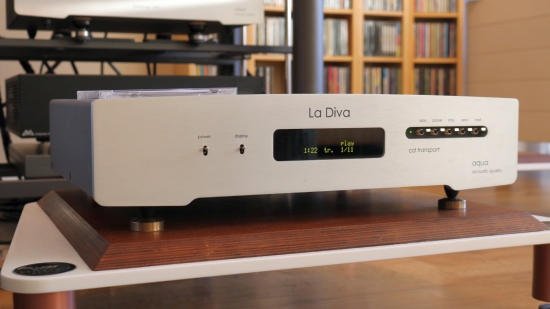
La Diva and LinQ
At this point during my music server adventures, I briefly encountered the Aqua La Diva CD transport and, frankly, it turned things upside down for me. No matter how much I had been enjoying the music server ride, the La Diva had an irresistible combination of aspects that I just could not find in any music server.
And then, the Aqua LinQ Network Interface came along, stirring the pot with its amazing solidity, neutrality, and dynamics, which sparked renewed interest and resulted in a series of raving reviews.
Around this time last year, I was anticipating doing an extensive review of the La Diva, along with a comparison between the player and the then-brand-new LinQ. Alas, as time moved on and the LinQ development took an unexpected turn and Roon support was dropped in favor of HQPlayer NAA, I decided to focus on the LinQ, HQP NAA, NAA Core module, and all the related facets, and assess the La Diva later.
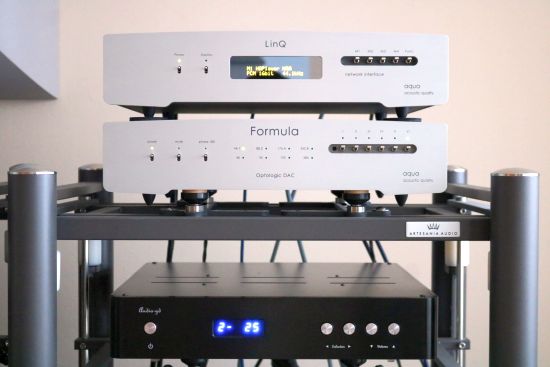
Once I completed my coverage of all the LinQ’s modules and their functionalities, it was time to return to the CD transport. Alas, it was not to be. By this time, Aqua’s stock of Philips CD-Pro 2 mechanisms (which were already a discontinued model) was all but depleted and Cristian of Aqua Hifi revealed that they were working on a successor for the La Diva. What the new model would be called was still up in the air, but it was soon confirmed that the CD-Pro 8 S mechanism would be used.
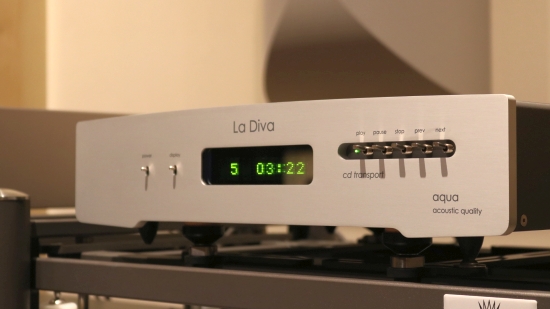
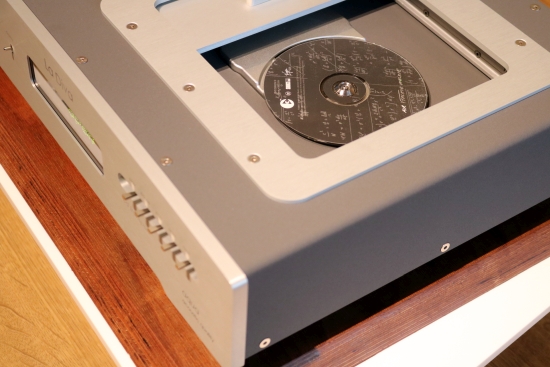
New La Diva M2 – Transport Mechanism
The new generation of La Diva is a machine that, while keeping the name, is completely new, both in terms of CD mechanics and all internal electronics, power supply, FPGA decoding, clock, display, and more. The Diva M2 features the new CD Pro-8S CD transport, modified and tweaked for maximum performance and mechanical silence. Contrary to the original model’s tiny-character display, the new display offers a really nice and big micro-LED display that is reminiscent of the Mark Levinson digital components from the nineties.
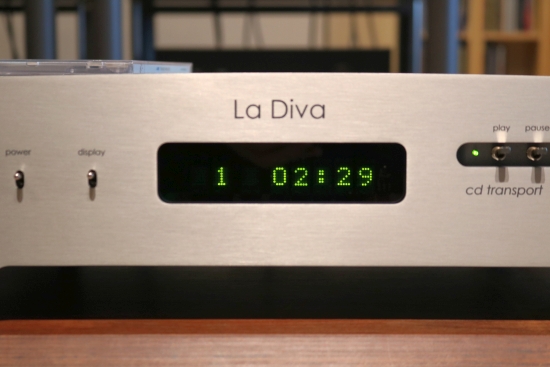
Whereas the original Diva has smooth but tiny digits that I can’t read from the listening position even with glasses, I can actually read the new display content without glasses from 5 meters away!
Based on the StreamUnlimited Blue Tiger Optical Drive Platform, the CD-Pro 8 Series is the successor of the CD-Pro 2 and like its predecessor, it has its roots in Philips technology. At its core is the tried-and-trusted Sanyo SF-HD 850 optical unit. The mechanism features a solid Aluminium chassis, carbon fiber cover, and carbon fiber turntable. Coming from the CD Pro 2, the CD Pro 8 seems to me like an entirely natural next move because StreamUnlimited has extended the famous Philips heritage, and prior to that, has acquired solid experience developing OEM CD mechanisms and loaders for many industry-leading companies, including Wadia Digital.
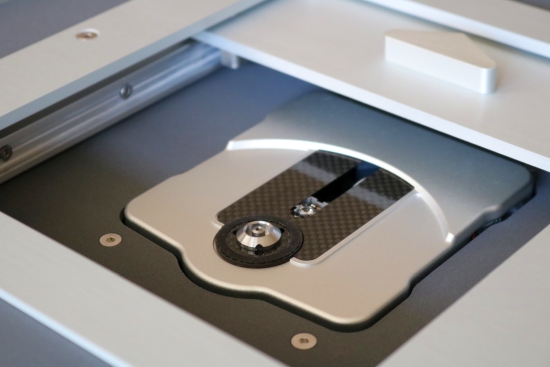
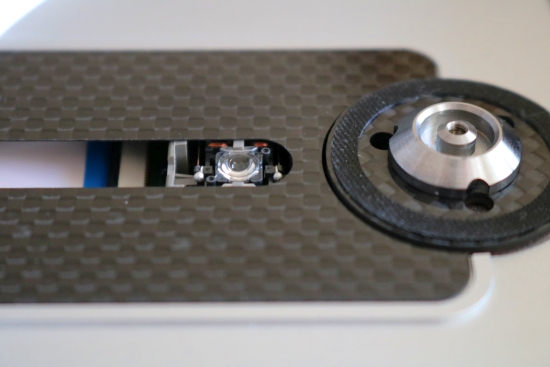
The mechanism allows the manufacturer to choose an internal or external master clock for the lowest jitter and upon checking with Aqua, Cristian confirmed that the “Master Clock” is fed to the transport mechanism via a dedicated coaxial cable, and the AES/EBU and S/PDIF outputs are created in FPGA via proprietary code (as it is also done for the LinQ). The internal S/PDIF of the CD Pro-8S is not used. Further, the Diva M2 contains proprietary circuitry to control the servo system.
Instead of merely being mounted on the standard silicon dampers, inside the La Diva M2, the mechanism is hard-coupled to a custom stainless steel plate that in turn is suspended from a large and thick metal base panel via large rubber dampers. This assembly is then mounted to the component’s chassis via a second set of large rubber dampers.
For those who wish to dive deeper into the StreamUnlimited background, the company has a dedicated optical storage daughter site with lots of additional information. And for those who wish to dive even more deeply into CD reader mechanism history, there is a dedicated Philips CDM section right here on HFA.
Next: Servers, Streamers, and CD Players

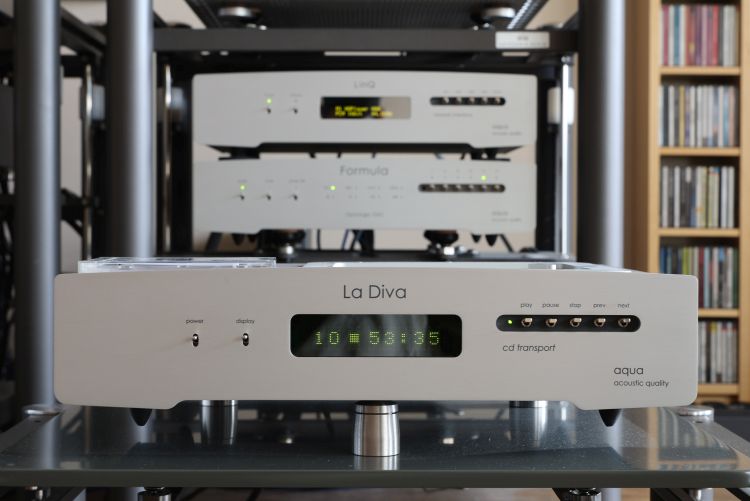
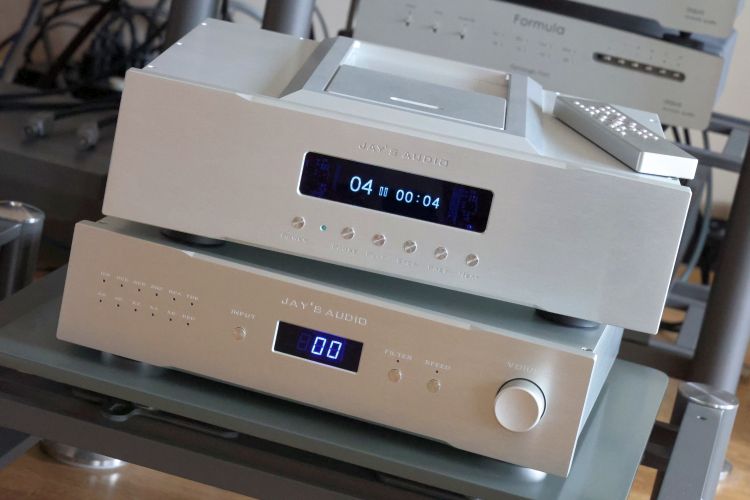
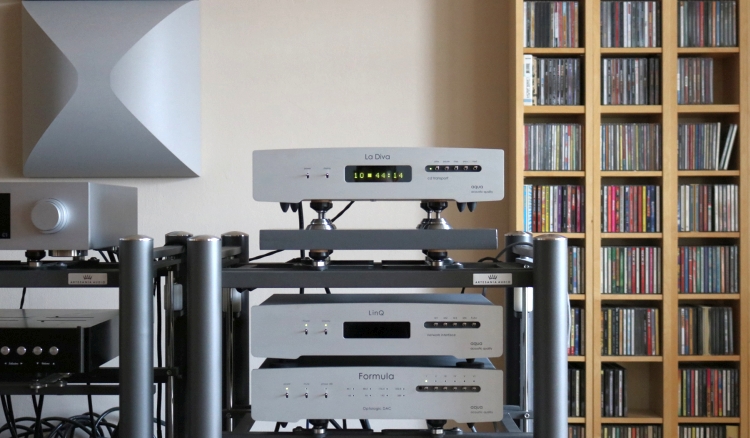
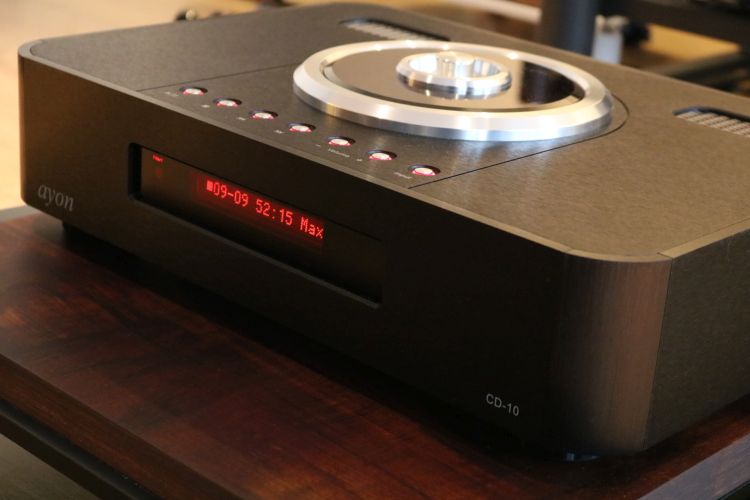
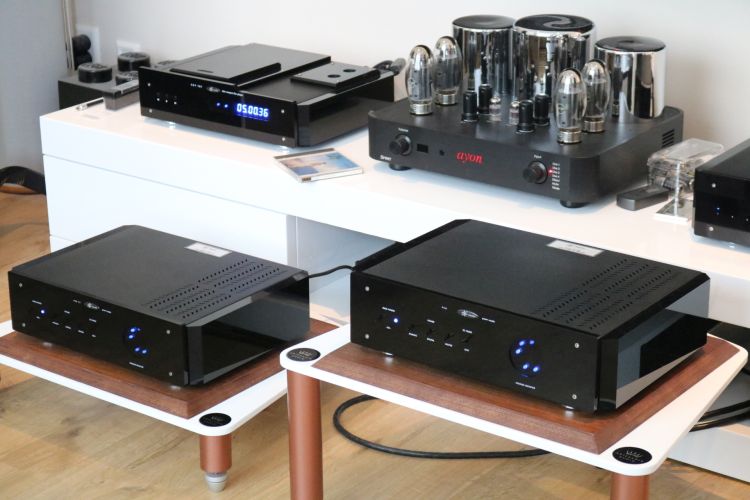
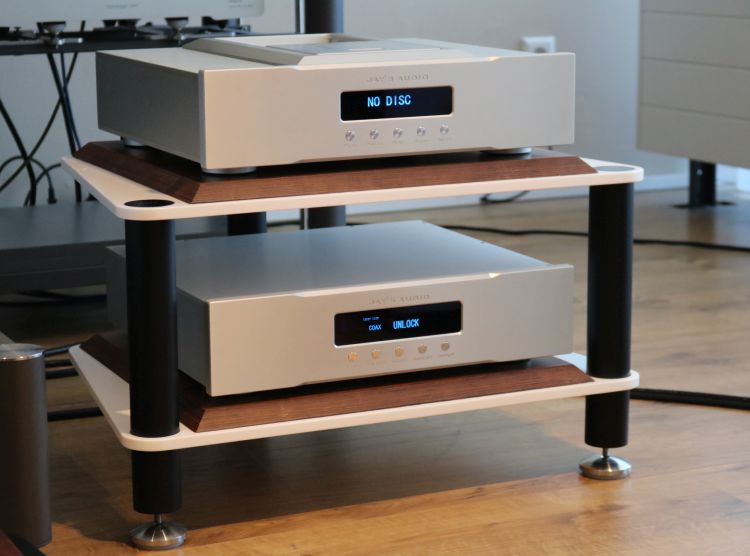
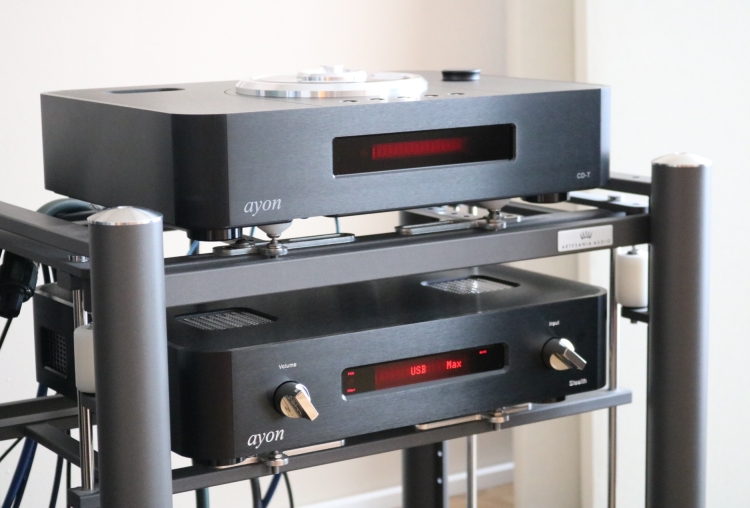
Hi Christiaan,
excellent review since you are valuing very much the emotional aspects of the playback with this device.
I also appreciate that the review is on “one” page, much better now.
And many congrats for your new job you mentioned on WBF 🙂
Matt
Hi Matt, thanks, and glad to hear you liked the review! Also, thanks for bringing the paging matter to my attention. Actually, -cough- I had forgotten to add the dividers. So sorry, but I’ve now put them in.
Christiaan,
I really prefer to have a review on one page than on several pages 🙂
Matt
And another inspiring review. When the Compact Disc is rediscovered will it be named as Polycarbonate? I would say, in any case, keep spinning! If you mention my name in relation to sound tuning, it is seen as a personal challenge, so keep an eye on your mailbox, because I am working on several variations on the Bells Bronze theme. Specially created for HFA. Patience.
Indeed! Let’s resume the good habit of bringing along some nice stacks of Polycarbonates to play at friends’ places!
Looking forward to future Bells Bronze products:-)
Hi Christiaan,
Great review! Gives me a lot of clarity regarding what the La Diva M2 sounds like.
A few things I’m curious about…
1) Have you had a chance to compare the M2 with other transports such as the Pro-ject RS2T which share the same StreamUnlimited mechanism? Do you find that there is a distinctive sonic signature there?
2) Curious if you found the La Diva M2 fatiguing? I’m considering purchasing it but fear that this might be the case.
3) Also, curious your thoughts on the how the La Diva M2’s sound and perhaps even the whole StreamUnlimited sound signature compare to the sound signature of the CEC transports? Does one sound generally more “analog” than the other because I’ve heard that term used to describe both the CEC brand in general and the M2 in particular.
Hi Ajay, alas, I have not heard the Pro-Ject. I know it uses the same mechanism but that is but one building block. Of paramount importance are also the clock, power supply, and output section. These matters can have a large influence on the sound of a player.
The Diva M2 most definitely does not sound fatiquing. It has the benefits of the classic CDM1 drives combined with great resolution and transparency. It sounds fluid, refined, and “analog” in the best sense of the word and it is relaxed whilst not going overboard in terms of creaminess or warmth.
I find that people use the word “analog” when describing a smooth, sweet, non-edgy sound. But they often go overboard with this. After all, real-life artists also do not sound creamy…;-) Anyway, the CECs I heard (I owned the Tl1x and heard a few others) sound smooth and free-flowing, but to me also a little too “analog”. They are not similar to a good LP record or reel-to-reel recording (which one should refer to as exemplifying analog), but are overly sweet, round, thick, and relatively slow. The TL1x actually sounded slower and less dynamic than classic CDM-1-based Marantz CD94 used as a transport.
If you crave that extra bit of smoothness and warmth, then there’s nothing wrong with that, but I would personally refer to it as “Romantic”. Usually, it is best to add this extra dose of romance in the DAC, preamp, or the analog cables. Anyway, that’s just my opinion:-)
Hi Christiaan, Thanks for the insights! I agree with you that the place to start adding in extra smoothness, warmth and the like would not be at the transport. Probably not even the DAC. I was thinking a tube preamp would probably be the best way. I mean, I assume it’s best — in theory — to bring as much resolution/detail into the chain upfront and then “soften” its edges (if necessary) later in the chain, than to sacrifice resolution/detail upfront because, by doing it upfront, it would be fundamentally unrecoverable down chain.
When one considers it from that standpoint, sounds like the CECs (at least the lower to mid-tier units I have been looking at) are likely inferior to the M2 on every meaningful count.
Your description of the CEC in your reply to me reminded me a bit of things you mentioned in your Jay’s Audio CDT3-Mk3 review. I was also considering that unit. Sounds like the Jay’s for you was also not at the level of M2, especially considering the proper role of a transport in the audio chain?
BTW, I love your reviews! Been following for a while. Can’t think of anyone else with quite as much insight into the CD medium — particularly extending into the present — as you!
Thanks for the praise, Ajay! Indeed, I would regard the CEC house sound (at least based on the TL1x that I owned) as sounding warmer, slower, rounder, less well-resolving, and less exciting than the Aqua Diva M2. Even so, the Diva M2 is never etched or dry. It remains on the fluid, gentle, and refined side. It is the best transport that I have heard so far.
Thanks! Just bought an M2 today – in no small part, on strength of your feedback. I will let you know how it goes!
That’s nice, Ajay! Indeed, do let me know.
BTW, would you mind giving me some advice: I am going to be going out from the M2 into a Mola Mola Tambaqui. It appears the only two common connections options would be s/pdif aes/ebu. I have neither cable type on hand because I prefer USB, generally. I will need to buy a decent cable. Of those two, would you have a genera preference in terms of sound quality? Thank you again!
The USB standard is not used with CD transports. Between AES/EBU and S/PDIF, I prefer and use AES EBU, and my brand of choice is Jorma Audio. The Jorma AES/EBU cables (and S/PDIF variant) are the most neutral, linerar, and accurate that I have heard. See my review on this site. For alternatives, please have a look at the other cable reviews that I did.
Thank you! Sorry, I misspoke. I have been using an Optical connection, which isn’t going to work on this case. Thank you for the suggestion! And yes I do recall that that Jorma has indeed been mentioned.
Ah, well, even if TOSlink was an option with the Diva M2, I would strongly suggest going for either S/PDIF or AES/EBU. Of course, you could also investigate Aqua DA Converters. The La Scala, for instance, is very special, and this then opens the possibility of using AQLink which is Aqua’s I2S implementation which is better than AES/EBU.
Will do! Thanks!
Hi Christiaan ,
It seems that Bricasti have released a new CD / SACD player (Drive) which could be very interesting to test and compare !
https://www.bricasti.com/en/consumer/m19.php
Best Regards
Pascal
Hi Pascal, your comment was in spam and I only found it now. Indeed, this player will be interesting to review. I will see if I can get one in for review.
Great review Christian, I have all three of the Aqua units (M2 Ladiva, Formula Xhd V2, & Lin-q) and find your assessment of the units mirrors my own experience. It must be something in Italy that rings my bell as I also have a full set of Audio Analogue Maestro SE preamp and a pair pure Class A SE mono power amps. They pair perfectly with a pair of Amphion Krypton 3X speakers + 6 stack REL S510 subs. my music server is an Uber custom build that with the LinQ compares favorably with anything I have heard at any price. I find your writing/reviewing style very enjoyable and informative so thankyou.